Mengmeng Zhang
Cross-domain Hyperspectral Image Classification based on Bi-directional Domain Adaptation
Jul 03, 2025Abstract:Utilizing hyperspectral remote sensing technology enables the extraction of fine-grained land cover classes. Typically, satellite or airborne images used for training and testing are acquired from different regions or times, where the same class has significant spectral shifts in different scenes. In this paper, we propose a Bi-directional Domain Adaptation (BiDA) framework for cross-domain hyperspectral image (HSI) classification, which focuses on extracting both domain-invariant features and domain-specific information in the independent adaptive space, thereby enhancing the adaptability and separability to the target scene. In the proposed BiDA, a triple-branch transformer architecture (the source branch, target branch, and coupled branch) with semantic tokenizer is designed as the backbone. Specifically, the source branch and target branch independently learn the adaptive space of source and target domains, a Coupled Multi-head Cross-attention (CMCA) mechanism is developed in coupled branch for feature interaction and inter-domain correlation mining. Furthermore, a bi-directional distillation loss is designed to guide adaptive space learning using inter-domain correlation. Finally, we propose an Adaptive Reinforcement Strategy (ARS) to encourage the model to focus on specific generalized feature extraction within both source and target scenes in noise condition. Experimental results on cross-temporal/scene airborne and satellite datasets demonstrate that the proposed BiDA performs significantly better than some state-of-the-art domain adaptation approaches. In the cross-temporal tree species classification task, the proposed BiDA is more than 3\%$\sim$5\% higher than the most advanced method. The codes will be available from the website: https://github.com/YuxiangZhang-BIT/IEEE_TCSVT_BiDA.
NTIRE 2025 Challenge on Day and Night Raindrop Removal for Dual-Focused Images: Methods and Results
Apr 19, 2025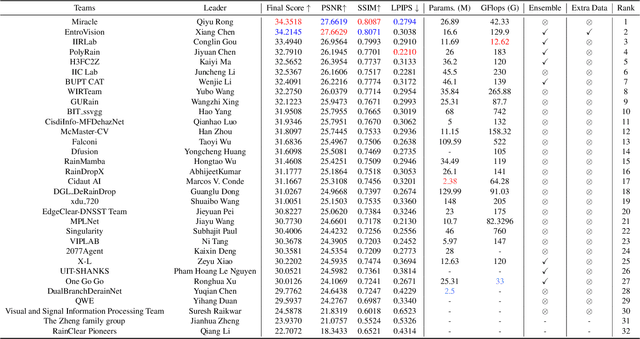
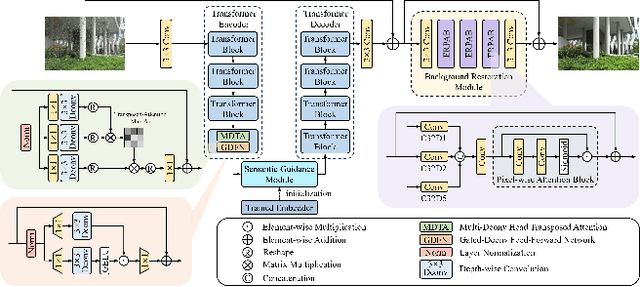
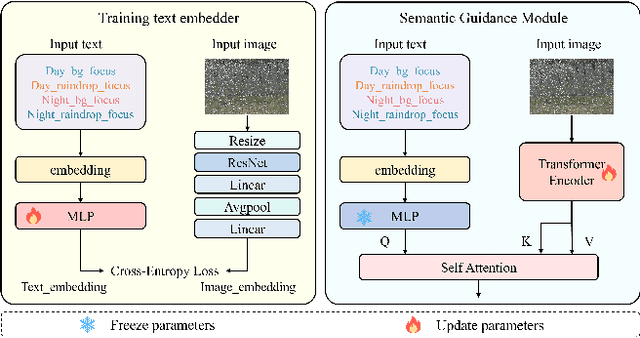
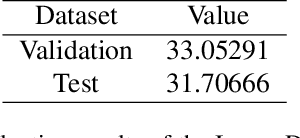
Abstract:This paper reviews the NTIRE 2025 Challenge on Day and Night Raindrop Removal for Dual-Focused Images. This challenge received a wide range of impressive solutions, which are developed and evaluated using our collected real-world Raindrop Clarity dataset. Unlike existing deraining datasets, our Raindrop Clarity dataset is more diverse and challenging in degradation types and contents, which includes day raindrop-focused, day background-focused, night raindrop-focused, and night background-focused degradations. This dataset is divided into three subsets for competition: 14,139 images for training, 240 images for validation, and 731 images for testing. The primary objective of this challenge is to establish a new and powerful benchmark for the task of removing raindrops under varying lighting and focus conditions. There are a total of 361 participants in the competition, and 32 teams submitting valid solutions and fact sheets for the final testing phase. These submissions achieved state-of-the-art (SOTA) performance on the Raindrop Clarity dataset. The project can be found at https://lixinustc.github.io/CVPR-NTIRE2025-RainDrop-Competition.github.io/.
SPT: Spectral Transformer for Red Giant Stars Age and Mass Estimation
Jan 10, 2024Abstract:The age and mass of red giants are essential for understanding the structure and evolution of the Milky Way. Traditional isochrone methods for these estimations are inherently limited due to overlapping isochrones in the Hertzsprung-Russell diagram, while asteroseismology, though more precise, requires high-precision, long-term observations. In response to these challenges, we developed a novel framework, Spectral Transformer (SPT), to predict the age and mass of red giants aligned with asteroseismology from their spectra. A key component of SPT, the Multi-head Hadamard Self-Attention mechanism, designed specifically for spectra, can capture complex relationships across different wavelength. Further, we introduced a Mahalanobis distance-based loss function to address scale imbalance and interaction mode loss, and incorporated Monte Carlo dropout for quantitative analysis of prediction uncertainty.Trained and tested on 3,880 red giant spectra from LAMOST, the SPT achieved remarkable age and mass estimations with average percentage errors of 17.64% and 6.61%, respectively, and provided uncertainties for each corresponding prediction. The results significantly outperform those of traditional machine learning algorithms and demonstrate a high level of consistency with asteroseismology methods and isochrone fitting techniques. In the future, our work will leverage datasets from the Chinese Space Station Telescope and the Large Synoptic Survey Telescope to enhance the precision of the model and broaden its applicability in the field of astronomy and astrophysics.
Language-aware Domain Generalization Network for Cross-Scene Hyperspectral Image Classification
Sep 06, 2022



Abstract:Text information including extensive prior knowledge about land cover classes has been ignored in hyperspectral image classification (HSI) tasks. It is necessary to explore the effectiveness of linguistic mode in assisting HSI classification. In addition, the large-scale pre-training image-text foundation models have demonstrated great performance in a variety of downstream applications, including zero-shot transfer. However, most domain generalization methods have never addressed mining linguistic modal knowledge to improve the generalization performance of model. To compensate for the inadequacies listed above, a Language-aware Domain Generalization Network (LDGnet) is proposed to learn cross-domain invariant representation from cross-domain shared prior knowledge. The proposed method only trains on the source domain (SD) and then transfers the model to the target domain (TD). The dual-stream architecture including image encoder and text encoder is used to extract visual and linguistic features, in which coarse-grained and fine-grained text representations are designed to extract two levels of linguistic features. Furthermore, linguistic features are used as cross-domain shared semantic space, and visual-linguistic alignment is completed by supervised contrastive learning in semantic space. Extensive experiments on three datasets demonstrate the superiority of the proposed method when compared with state-of-the-art techniques.
Hyperspectral and Multispectral Classification for Coastal Wetland Using Depthwise Feature Interaction Network
Jul 12, 2021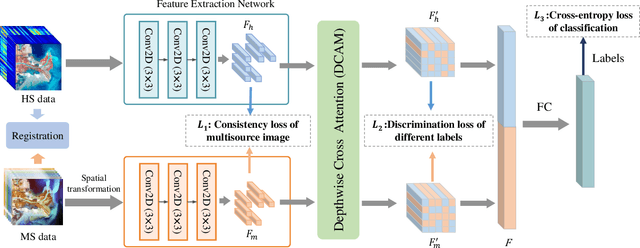
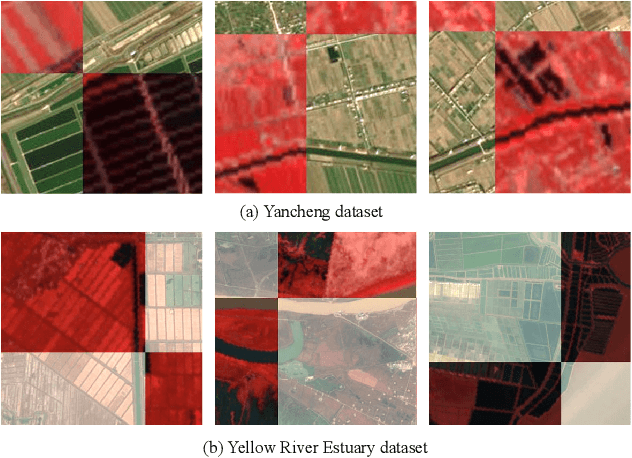
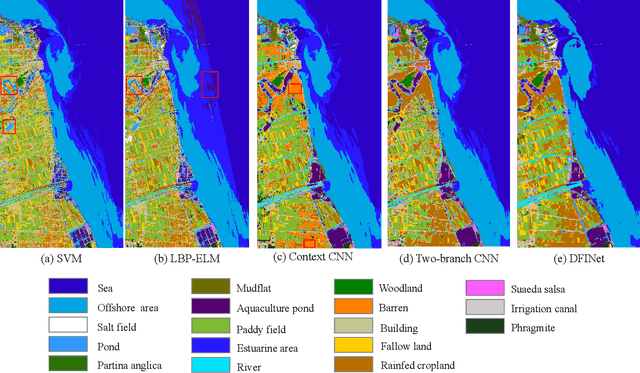
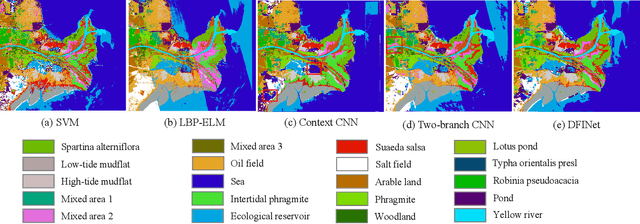
Abstract:The monitoring of coastal wetlands is of great importance to the protection of marine and terrestrial ecosystems. However, due to the complex environment, severe vegetation mixture, and difficulty of access, it is impossible to accurately classify coastal wetlands and identify their species with traditional classifiers. Despite the integration of multisource remote sensing data for performance enhancement, there are still challenges with acquiring and exploiting the complementary merits from multisource data. In this paper, the Deepwise Feature Interaction Network (DFINet) is proposed for wetland classification. A depthwise cross attention module is designed to extract self-correlation and cross-correlation from multisource feature pairs. In this way, meaningful complementary information is emphasized for classification. DFINet is optimized by coordinating consistency loss, discrimination loss, and classification loss. Accordingly, DFINet reaches the standard solution-space under the regularity of loss functions, while the spatial consistency and feature discrimination are preserved. Comprehensive experimental results on two hyperspectral and multispectral wetland datasets demonstrate that the proposed DFINet outperforms other competitive methods in terms of overall accuracy.
 Add to Chrome
Add to Chrome Add to Firefox
Add to Firefox Add to Edge
Add to Edge